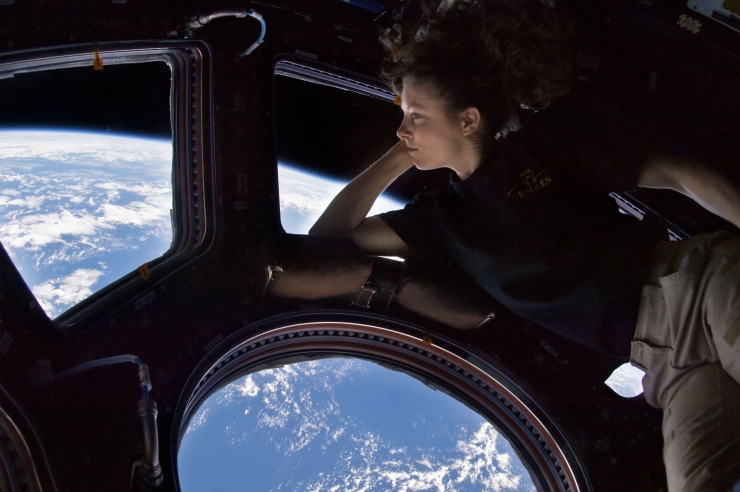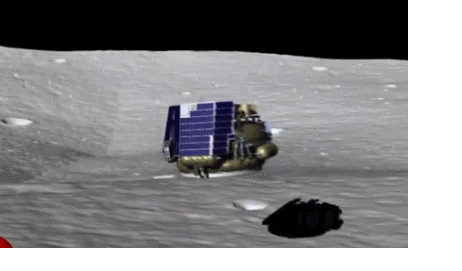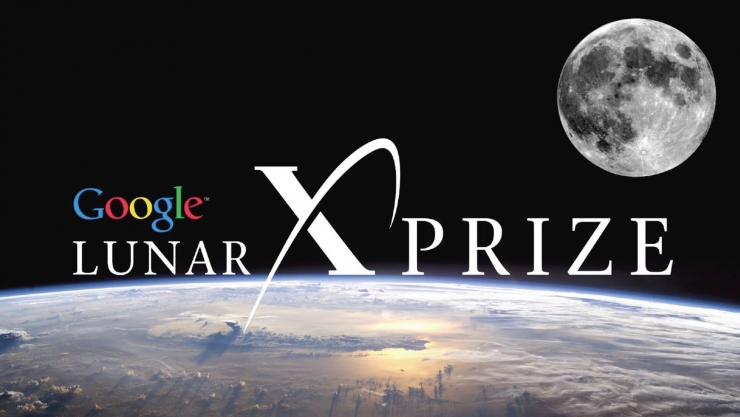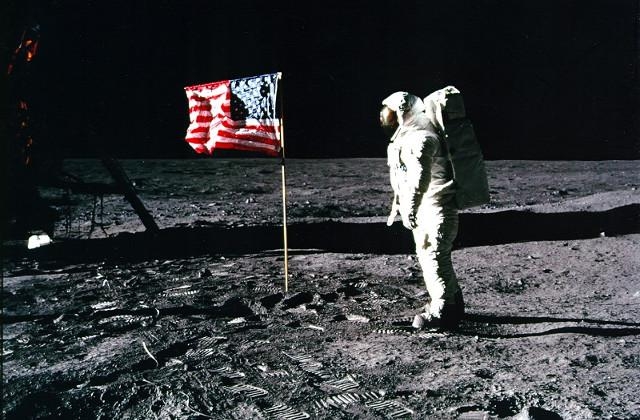
Moon Express (moon express), a space exploration start-up company, announced on August 3, Pacific Time, that it has officially obtained the Moon Accreditation License of the Federal Aviation Administration (FAA). This is the first private person in history. The company was granted permission to launch moon landing vehicles on the moon's surface.
Then we can't help wondering what company is this? What can it do? Can you really take us to see my sister?
What does Moon Express come to?Moon Express is a small start-up company that was established to win the Google Lunar X Prize competition. The short-term business plan is to provide lunar machine transportation and data services. The long-term goal is to mine lunar mineral resources.
Moon Express was founded in August 2010 by Naveen Jain, Barney Pell and Robert D. Richards and is now headquartered in Cape Canaveral, Florida. Although it is a start-up company, its three founders are not young, Jain is 56 years old, Pell is 48 years old, and Richards is at least 45 years old, but they all have outstanding education background and impressive entrepreneurial experiences . Among them, Robert D. Richards traveled to China to participate in Tencent WE Conference in 2014, and the latter was listed in one of the three investors of Moon Express's Series C financing . The total amount of financing in this round reached 16.5 million U.S. dollars. It is not clear how much Tencent invested in it.

Naveen Jain, an Indian-American who used to be the founder of the InfoSpace website, once developed to be the largest Internet company in the northern United States, but then lost a foothold in 2000 when the Internet bubble burst. Barney Pell, a former NASA computer scientist and co-founder of Singularity University, once founded a search engine company called Powerset, which was later acquired by Microsoft for $100 million in 2008 and became the current Bing search engine. Prof. Robert D. Richards, a space entrepreneur, set up a so-called “International Space University†in France in 1987 and founded Odyssey Moon in the early days. This company was the first official contestant of Google’s Lunar X Prize. .

From left to right: Naveen Jain, Barney Pell and Robert D. Richards
Moon MX-1Moon Express's moon landing device is called the MX-1. This round moon landing device can "jump" on the surface of the moon. This is very different.
For most contestants, the immediate solution that comes to mind is to send a lunar rover to the surface of the moon, and then let the car run the required distance to avoid the stones and other objects encountered along the way. But the MX-1 is not the same. Its solution is to use the camera to observe the surroundings after the moon's soft landing, and then take off again, thus landing at least 500 meters from the first place to complete the challenge.

Conceptual animation of MX-1 pushing on the moon's surface
Therefore, the MX-1 is basically a flying fuel tank whose structure is the cabinet plus the necessary thrusters, solar cells, cameras and other additional equipment . In addition, the MX-1 can not only be used as a platform for landing on the moon, but also can be transformed into a satellite platform. With a little modification, it can become a space-cleaning satellite for space debris, so it is a universal detector platform.
The MX-1 was launched into orbit via a pilot Electron rocket made by the startup Rocket Lab, and then it flew on its own approximately 240,000 miles to the moon, landing a few laps around the moon.
In addition, for this mission to the moon, in addition to the efforts of a group of companies such as Moon Express, there are two other extremely important driving forces: Google Lunar X Prize landing competition and NASA's Lunar CATALYST project.
Google Lunar X Prize landing contestGoogle’s unprecedented Lunar X Prize lunar landing contest began in 2007 to encourage private companies and engineers around the world to develop low-cost space exploration methods. If you want to win the game, the privately funded team (all teams must prove that 90% of the cost of their moon missions is funded by private sources.) The robot must be sent to the surface of the moon, walk at least 500 meters, and send HD photos to the earth. And video .

The first team to complete this task will receive $20 million, and the second team will receive $5 million. And they can all win extra bonuses with more technical and scientific achievements, such as staying on the moon's surface for one night or if they reached the landing place of Apollo.
From 2007 onwards, more than 30 teams have joined the team and there are now 16 teams left. Initially, the race end date was planned for 2012, but it has since been extended. The deadline for the remaining 16 teams is now December 31, 2017.
Lunar CATALYST ProjectLunar CATALYST stands for "Lunar Cargo Transportation and Landing by Soft Touchdown," and CATALYST happens to be the English word for "catalyst." The project was initiated by NASA to encourage space exploration by private companies in space . The well-known SpaceX is also part of this huge project.

Seeing here, you can find it coincides with Google Lunar X Prize, but it includes a broader range beyond the moon.
What is the relationship between Lunar X Prize and Lunar CATALYST?
The point of contact between the two is the Space Act Agreement (SAA). One of the provisions of Google Lunar X Prize is: Before December 31, 2016, the participating teams must get NASA's SAA contract and submit it to the organizer for confirmation. So, to get the SAA is eligible to continue to participate in the competition.
SAA is a legal agreement on the way in which space contracts are awarded. The United States government has to hand over SAA to the private sector when it assigns missions in space. At present, under the framework of Lunar CATALYST, the U.S. government has signed this agreement with 3 companies, namely Astrobotic Technology, Masten Space Systems and Moon Express. One of the Moon Express was obtained at the end of 2015.
One of the characteristics of the SAA agreement is that NASA and private companies signing parties to the agreement cannot have capital transactions , but NASA can provide technical assistance or rent some experimental equipment to it.
It is expected that by the end of this year, there will be a large number of the remaining 16 teams who are not eligible to continue playing because they have not received the SAA.
Moon Express: The Star Ocean's Business EmpireIf Moon Express is the first to successfully log in on the moon and complete the designated mission, then it will receive a $20 million bonus. But beyond bonuses, Moon Express expects more. Its co-founder and chairman, Naveen Jain, said: " We chose the moon not because it is easy, but because it is a good business . We are desperately fighting for resources on Earth, whether it is land, fresh water or energy. It's incredibly rich in space."

Jain once told the Washington Post: " Water is the oil of the solar system. " The ice on the surface of the moon can be used to produce rocket fuel. This can not only provide fuel for transporting mineral deposits back to Earth, but also can use the Moon as a new launching base, and embark on the asteroid belt, Mars and even more distant space business journey. .
The Moon Express team often compares the MX-1 to the iPhone, indicating that the MX-1 contains tremendous opportunities that cannot be imagined. This is similar to the fact that when Apple made the iPhone, it did not foresee an explosion in the APP market.
But there is still a long time before Moon Express's true landing on the moon. The plan is for next year. Currently, it still needs to assemble and test its own lunar lander, and it supports Rocket Lab, a rocket startup that it launched from the Earth. At present, it has not successfully launched the Electron Rocket. Moreover, Moon Express's competitors are also stepping up the process.
Difficult administrative approval roadIt was government-level forces that had previously set foot on the moon: the United States, the Soviet Union, and the nearest China. The entry of private companies into this field is unprecedented in history. Therefore, the process of approval for landing on the moon is also very complicated, because there is no such case in the world, and there is no available regulations in the United States to manage private space companies launching aircraft outside the Earth’s orbit. And, more thorny, the Outer Space Treaty signed 49 years ago required the United States to manage private companies to perform missions to other planetary bodies, but how to ensure that private companies do not violate planetary protection There are no convincing plans.
In addition, people are worried that the commercial moon landing will destroy the moon's surface structure. However, only the MX-1, which is as big as a coffee table, does not have to worry about such an effect. However, "monumental" needs like Apollo landing sites need to be protected, especially the Google Lunar X Prize which has a special bonus if the moon landing device can reach the Apollo landing site and transmit the video back to Earth. , will receive 4 million bonuses . However, NASA’s intention is to protect the Apollo login site. Moon Express said that he has not yet decided to enter the Apollo login site, but will respect NASA's wishes.

With respect to the Outer Space Treaty, Moon Express itself has taken the initiative to propose an interim solution . In April this year, Moon Express announced that it has submitted a report to the FAA for a report on the assessment of how the company will comply with the Outer Space Treaty, including the provision of specific voluntary disclosures to the government. "The content details how the mission will comply with the Outer Space Treaty. This gave the FAA a great boost to its follow-up approval of its landing requirements.
Moon Express became the first private company to obtain U.S. government approval to launch aircraft outside of Earth orbit, setting a precedent for companies that want to perform similar tasks in the future. For example, SpaceX, a US space exploration technology company, also has a plan to land on Mars in 2018. At that time, the company needs to obtain similar government approvals. Moon Express gives SpaceX a very good plan to use for reference.
The road to humanity’s star and sea has really kicked off.
Via New York Tmes & MIT Tech Review
Socket Connector,Board-To-Board Socket Connectors,Horizontal Socket Connector,Screw Male Socket Connector
Shenzhen Jinyicheng Electronci Technology Co.,Ltd. , https://www.jycconnectors.com